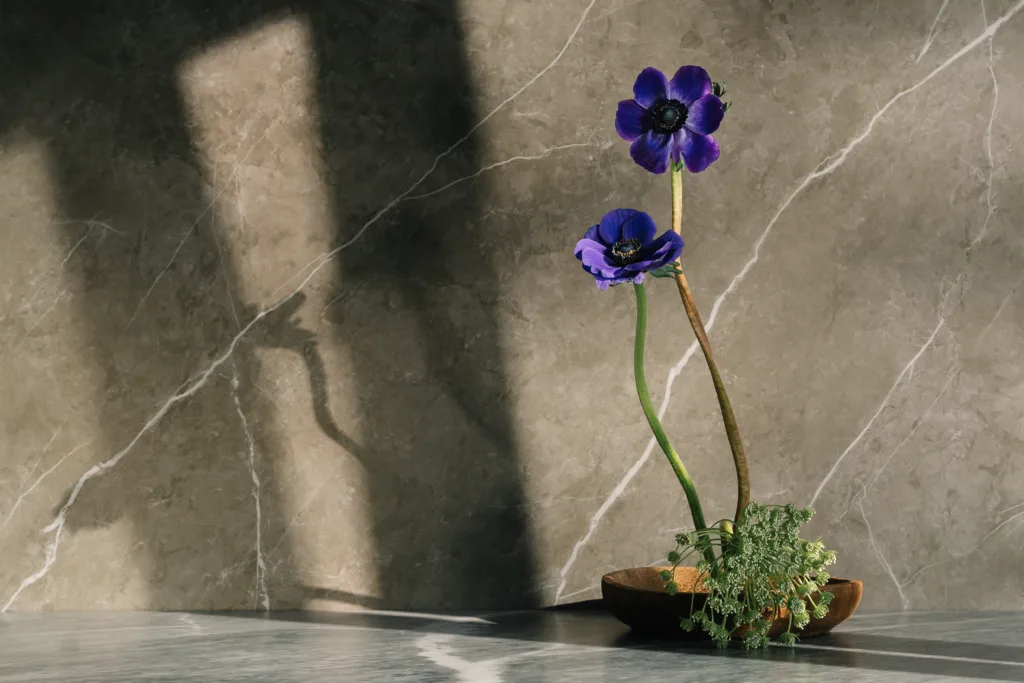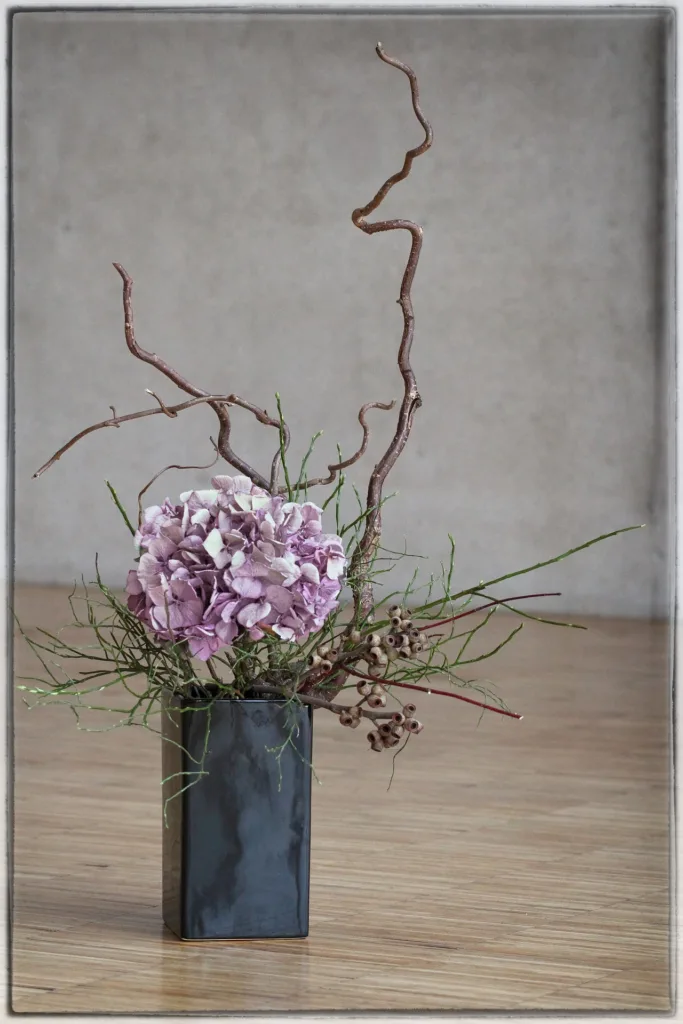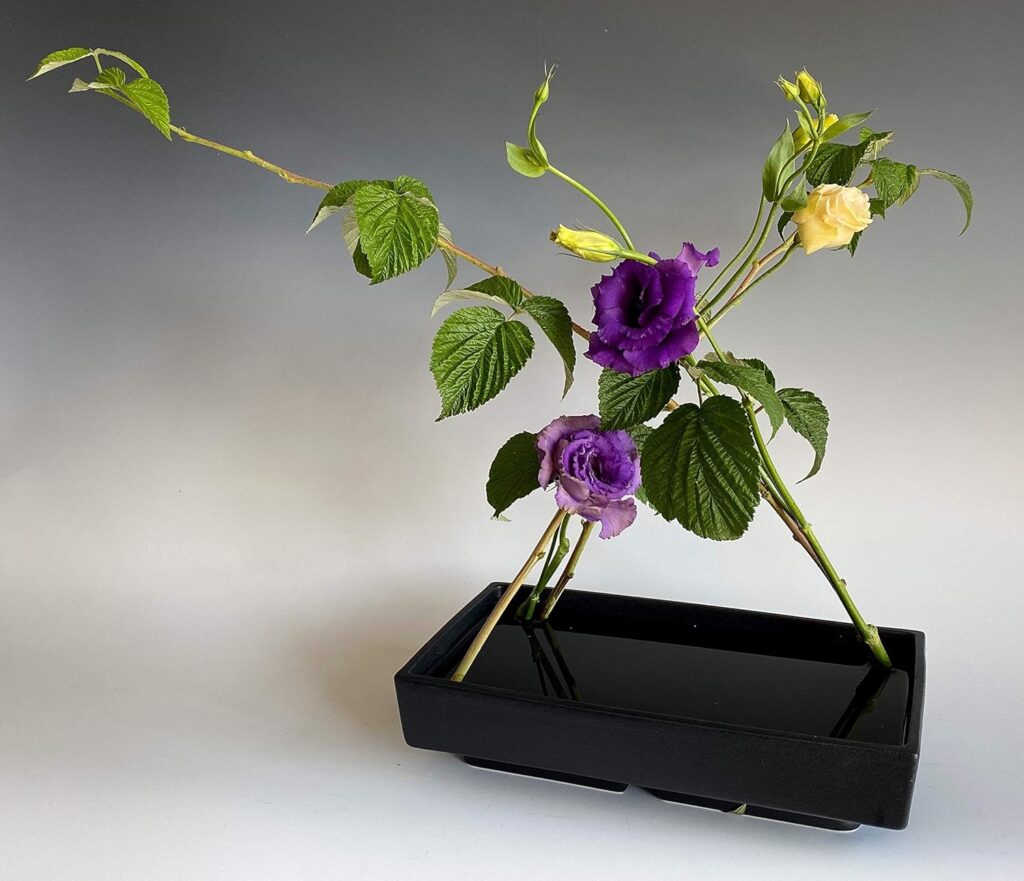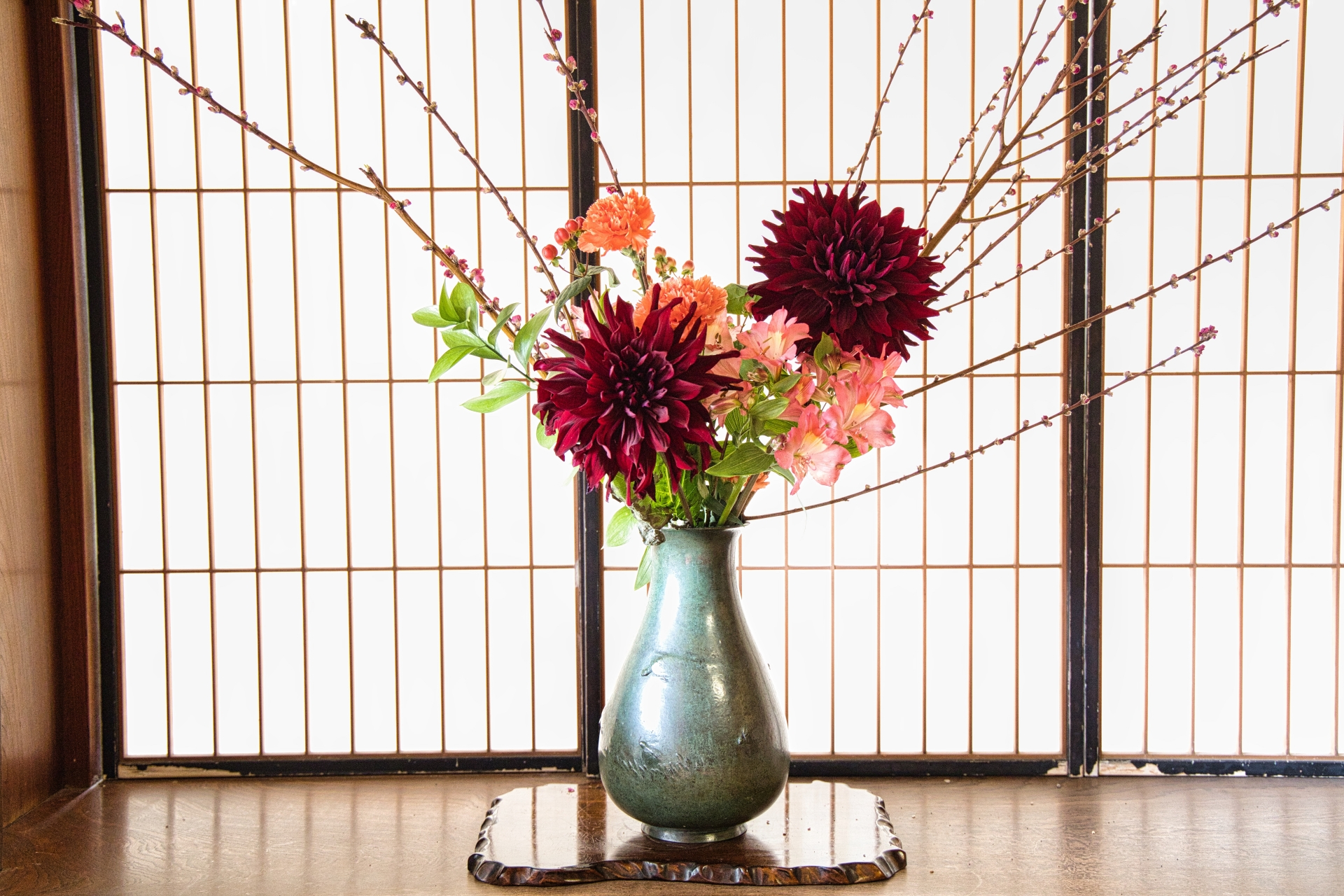Konnichiwa! Ikebana, the Japanese art of flower arrangement, is a practice that has been around for centuries. In ikebana, every element has meaning, and the vase is no exception. The ikebana vase is an essential component of the art, as it serves not only as a holder for the flowers but also as an extension of the arrangement itself. In this article, we will explore the different types of ikebana vases and how to use each one.

Planning a trip to Japan?
History of Ikebana Vases
The origins of ikebana can be traced back to the sixth century when Buddhist monks would arrange flowers in a simple vase as an offering to the gods. As the art evolved, so did the vessels used to hold the flowers. Over time, the ikebana vase became an integral part of the practice, and artists began to create vases that were not only functional but also aesthetically pleasing.
Types of Ikebana Vases
- Moribana Vase
The moribana vase is a shallow, flat container used in the moribana style of ikebana. This style involves arranging flowers in a shallow dish, using a kenzan (a spikey metal plate) to hold the stems in place. Moribana vases are typically made from ceramic, glass, or metal and come in a variety of shapes, including circular, rectangular, and oval.

- Nageire Vase
The nageire vase is used in the nageire style of ikebana, which involves arranging flowers in a tall, narrow vase. The nageire vase is typically made from ceramic or metal and has a narrow neck and a wide base. The flowers are arranged in a triangular shape, with the tallest stem in the center and the shorter stems arranged around it.

- Suiban Vase
The suiban vase is a shallow, rectangular container used in the suiban style of ikebana. This style involves arranging flowers in water, without the use of a kenzan. The suiban vase is typically made from ceramic or metal and comes in a variety of sizes. The arrangement in a suiban vase is meant to evoke a landscape, with the flowers representing mountains, waterfalls, and other natural elements.

- Rikka Vase
The rikka vase is used in the rikka style of ikebana, which is the oldest and most traditional style. This style involves arranging seven or nine branches in a specific pattern, with each branch representing a different element of nature. The rikka vase is typically made from ceramic or metal and has a wide base and a narrow neck. The arrangement in a rikka vase is meant to represent a natural landscape, with each branch representing a different element of the scene.
Tips for Using Ikebana Vases
- Choose the right vase for the style
Each style of ikebana requires a specific type of vase. When choosing a vase, consider the style of ikebana you will be creating and choose a vase that is appropriate.
- Use the right amount of water
When using a suiban vase, it’s important to use the right amount of water. The water should cover the bottom of the vase, but not be so deep that the flowers are completely submerged.
- Choose the right flowers
The type of flowers used in ikebana is just as important as the vase. When choosing flowers, consider their shape, color, and texture, and how they will work together in the arrangement.
- Pay attention to the placement of the stems
In ikebana, the placement of the stems is crucial. The stems should be arranged in a way that creates balance and harmony within the arrangement. The arrangement should have a sense of movement, with the flowers appearing to flow and dance within the vase.
- Consider the season
In ikebana, the season is an important consideration when choosing flowers and arranging them in the vase. Different flowers are associated with different seasons, and the arrangement should reflect the beauty of the current season.
- Embrace simplicity
In ikebana, simplicity is key. The arrangement should be simple and understated, with each element carefully considered and placed. The goal is to create a sense of calm and tranquility within the arrangement.
Final Thoughts
The ikebana vase is an essential component of the art of flower arrangement. Each type of vase is specifically designed for a particular style of ikebana, and choosing the right vase is crucial to the success of the arrangement. Whether you are using a moribana vase for a shallow arrangement or a nageire vase for a tall, dramatic arrangement, the vase should be chosen with care and consideration. By following the tips above and embracing the simplicity and beauty of ikebana, you can create stunning arrangements that evoke the natural beauty of the world around us.

